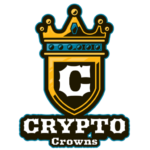As the popularity of cryptocurrency and blockchain technology grows, so does the demand for NFTs (non-fungible tokens). NFTs are digital assets that are stored on a blockchain and can be traded or sold like any other asset. Because they are stored on a blockchain, they are not subject to the same rules and regulations as traditional assets such as stocks or bonds. This makes them very attractive to artists and other creators who want to sell their work without having to go through a middleman.
However, before you dive into the world of NFTs, there are a few things you should know. In this article, we will discuss what NFTs are, how they work, and some of the risks associated with them.
What are NFTs?
NFTs are digital assets that are stored on a blockchain. A blockchain is a distributed database that allows for secure, transparent, and tamper-proof transactions. Because NFTs are stored on a blockchain, they can be traded or sold like any other asset.
How do NFTs work
NFTs work by using smart contracts. A smart contract is a computer program that runs on a blockchain and automatically executes transactions when certain conditions are met. For example, if you were to sell an NFT, the smart contract would automatically transfer the ownership of the NFT to the buyer when the transaction is complete. This process is secure, transparent, and cannot be tampered with.
What are the risks associated with NFTs?
NFTs are a relatively new technology and, as such, they come with a certain amount of risk. For example, because they are stored on a blockchain, NFTs are subject to the same volatility as other cryptocurrencies. This means that the value of an NFT can go up or down very quickly, and you could lose money if you’re not careful.
Additionally, because NFTs are not regulated by any central authority, there is no guarantee that you will be able to sell or trade them.
Finally, because NFTs are stored on a blockchain, they are also subject to the same hacking risks as other cryptocurrencies. This means that if a hacker were to gain access to your NFT, they could steal it or sell it without your permission.
Despite these risks, NFTs remain a popular way for artists and creators to sell their work. If you’re considering NFTing your art, be sure to do your research and understand the risks involved.
How to NFT your art
There are a few different platforms that you can use to NFT your art.
- The most popular platform is Ethereum, which is a decentralized platform that runs on the Ethereum blockchain. Ethereum allows you to create and sell NFTs without having to go through a middleman.
- Another popular platform is Wax, which is also a decentralized platform that allows you to create and sell NFTs. Wax is similar to Ethereum, but it has a few different features that make it unique.
- Finally, you can also use centralized platforms such as SuperRare and Rarible to NFT your art. These platforms work like traditional online marketplaces, and they take a percentage of each sale that you make.
No matter which platform you choose, you will need to create an account and deposit some funds before you can start NFTing your art. Once you have done this, you can upload your art and set a price for it. When someone buys your art, the NFT will be transferred to their account and the funds will be deposited into your account.
NFTing your art is a great way to sell it without having to go through a middleman. However, you should be aware of the risks involved before you get started. Be sure to do your research and understand the platform that you’re using before you start NFTing your art.


